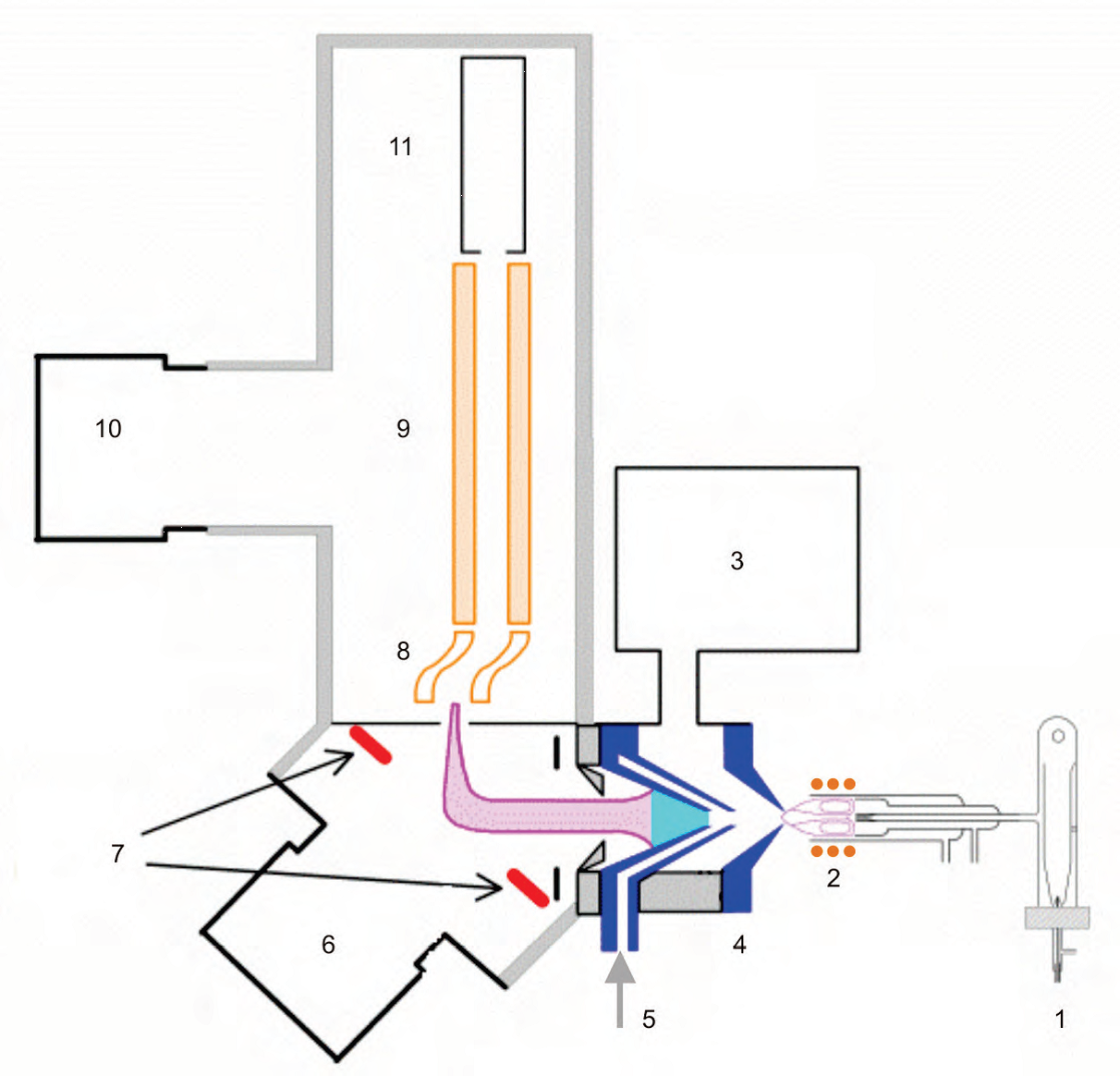Inductively coupled plasma mass spectrometry (ICP-MS)
Inductively coupled plasma mass spectrometry (ICP-MS) from Alanlytik Jena model PlasmaQuant MS is a powerful technique for elemental and isotopic analysis that combines the efficiency and ease of use of the inductively coupled plasma (ICP) with the sensitivity and selectivity of mass spectrometry (MS).
The ICP-MS technique has several advantages like:
- extremely low detection limits for trace elements (ppb level = μg /l) and ultratrace elements (ptt level = ng /l).
- a large linear range
- Possibility to determine the isotope composition of the elements.
- multi-element detecting
- high 'sample throughput'

The inductively coupled plasma (ICP) used in an atmospheric-pressure plasma, generated in argon gas flowing through a specially designed “Torch”. Energy transfers into the plasma by inductive coupling of the plasma electrons and ions within the magnetic field of a radio-frequency coil.
Inductively coupled plasma offers an advantage over chemical flames with its much higher temperature. Samples introduced into the ICP heat to more than 6000 K. This high temperature is focused on a very small area of approx. 5 cm3. The sample is introduced to the plasma in the form of aerosol (small droplets in a gas) via a “Nebulizer”. The droplets typically decompose, vaporize, atomize and ionize very quickly and effectively. In ICP nearly all the metals are over 90% ionized. Even elements with relatively high ionization potentials (such as P, As, Hg and I) are over 20% ionized.
In the PlasmaQuant MS an ionized sample is extracted from the plasma through two interface cones (“sampler cone” and “skimmer cone”) into the mass spectrometer. The pressure is reduced gradually in three stages by differential pumping. The PlasmaQuant MS uses the ReflexION, a 3D focusing, 90-degree ion mirror, to focus ions in to the mass analyzer. The ion optics allows elimination of neutrals, photons, droplets and solids that would otherwise produce high background signals and would contaminate the mass analyzer.
The quadrupole mass spectrometer separates ions of a specific mass to charge ratio. In the PlasmaQuant MS patented self-cleaning curved fringe rods are mounted in front of the mass analyzer. These pre-filters cause the ions to follow a curved trajectory shielding the quadrupole from excited neutrals. The all-digital ADD10 Discrete Dynode Electron Multiplier with ten orders of dynamic range records ions after they exit the mass spectrometer.

- Nebulizer and spray chamber
- Virtually center grounded coil
- Rotary vane vacuum pump
- Sampler cone
- Skimmer cone with iCRC
- Turbomolecular pump
- ReflexION Ion Mirror
- Curved pre-filters
- HD Quadrupole mass analyser
- Turbomolecular pump
- ADD10 - All-digital detection system